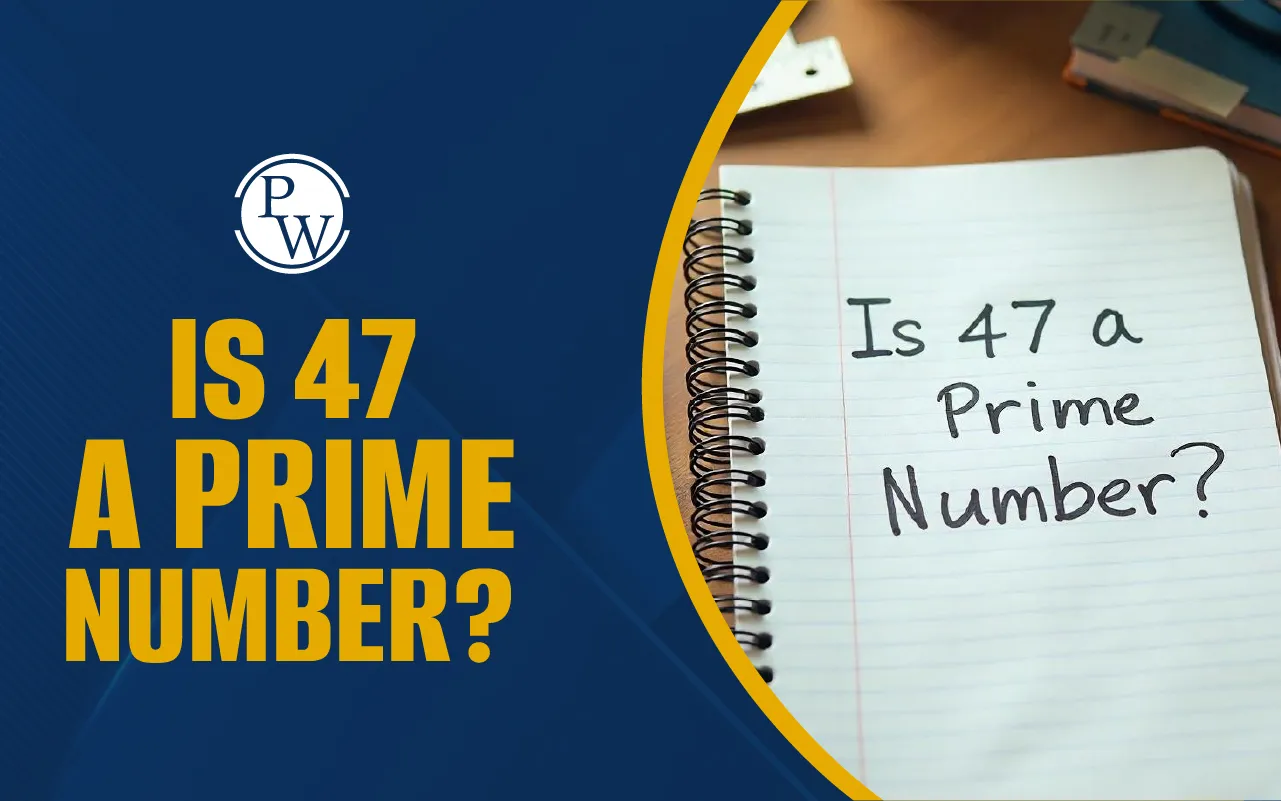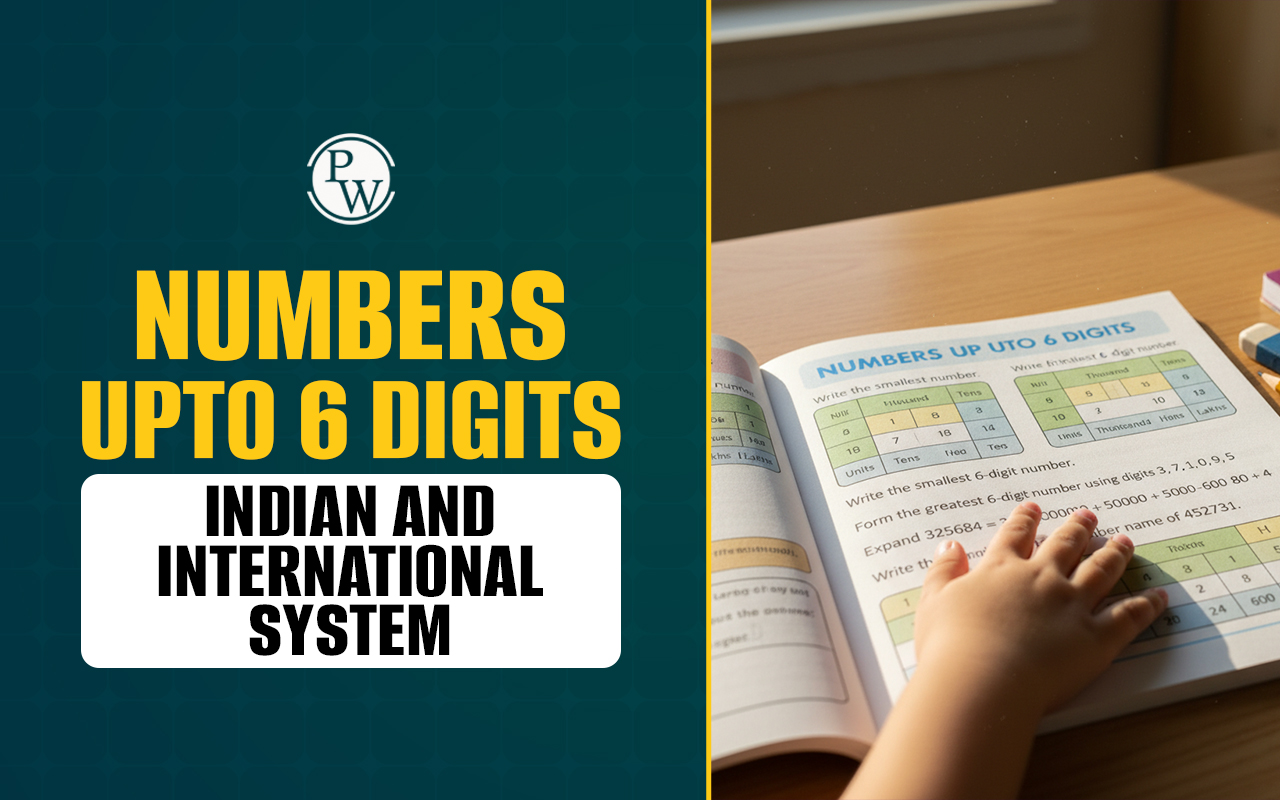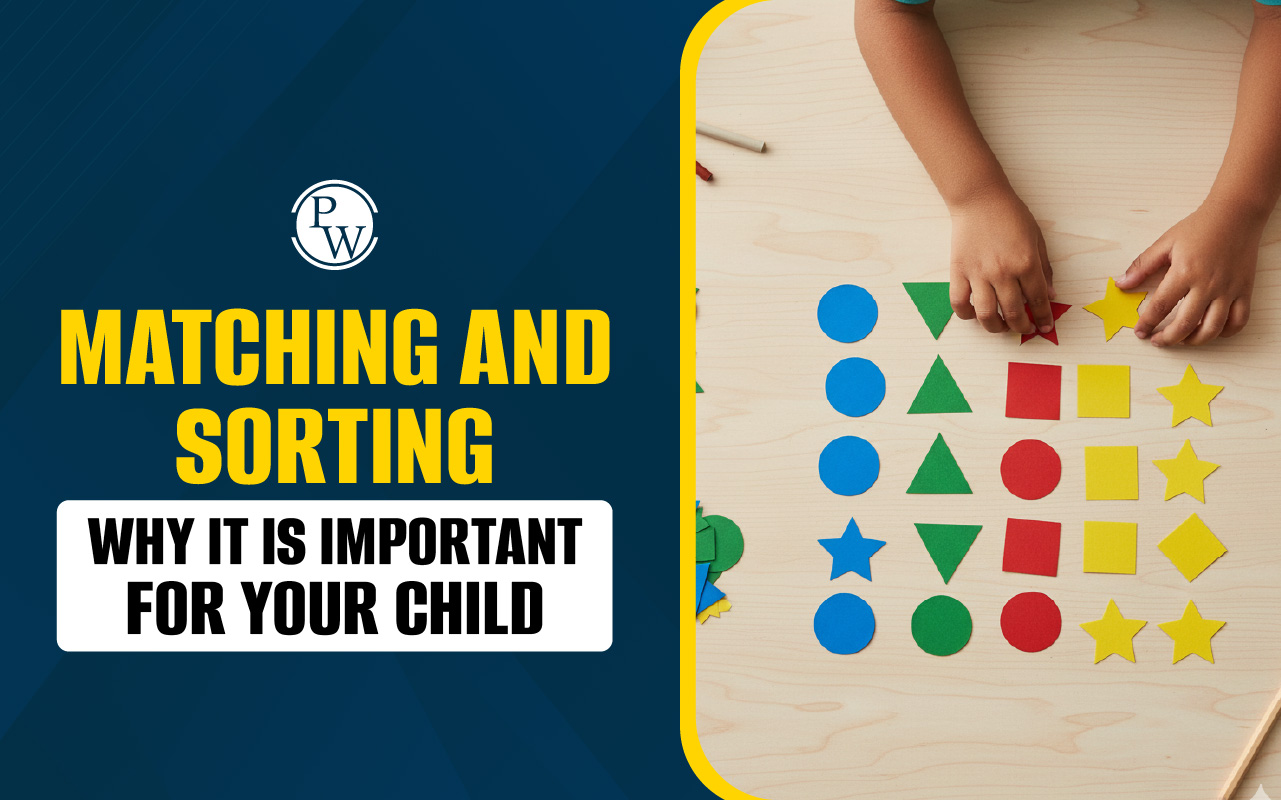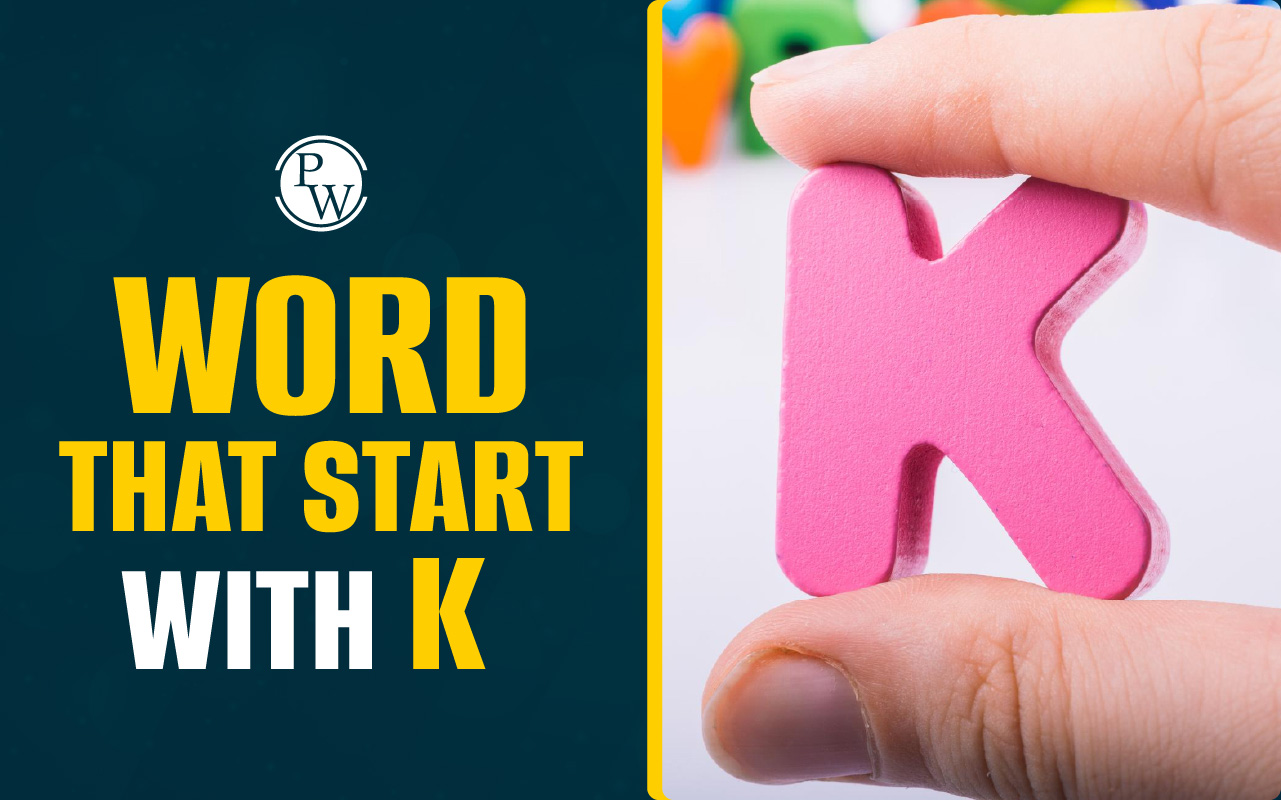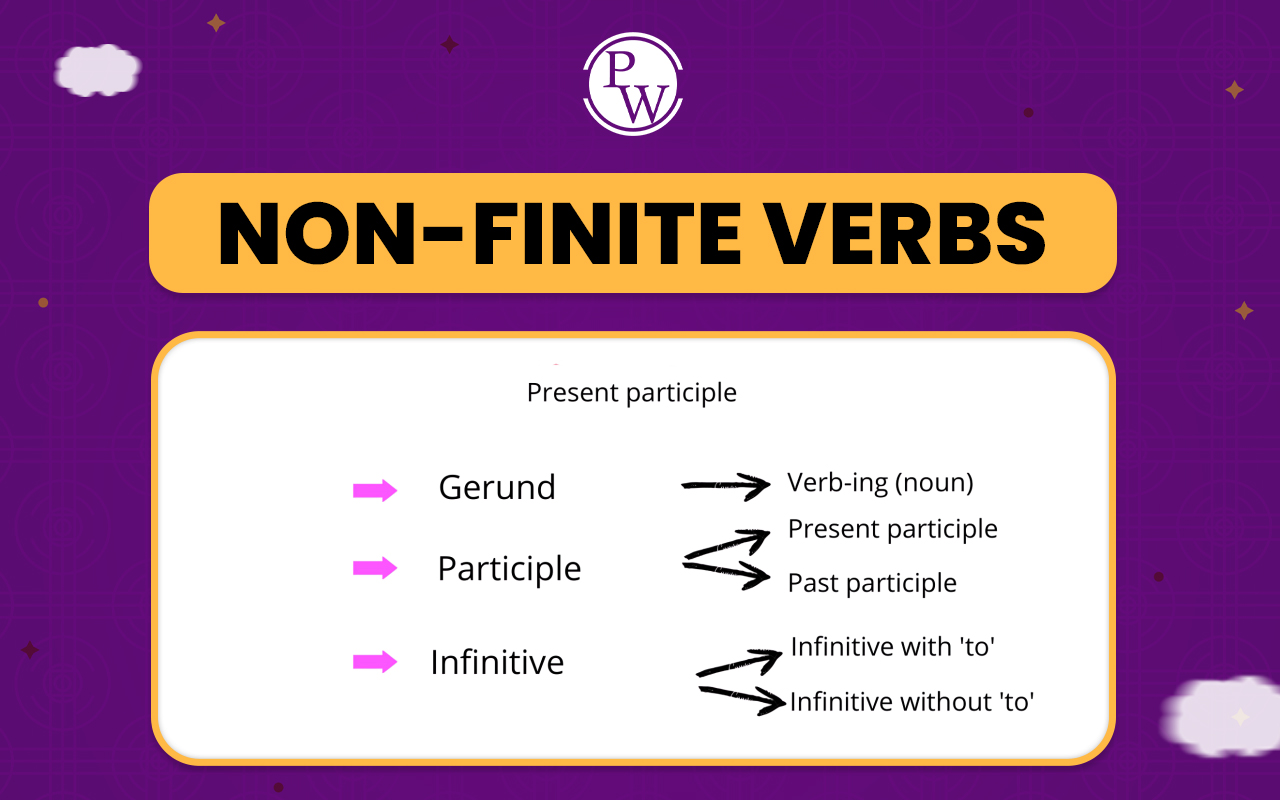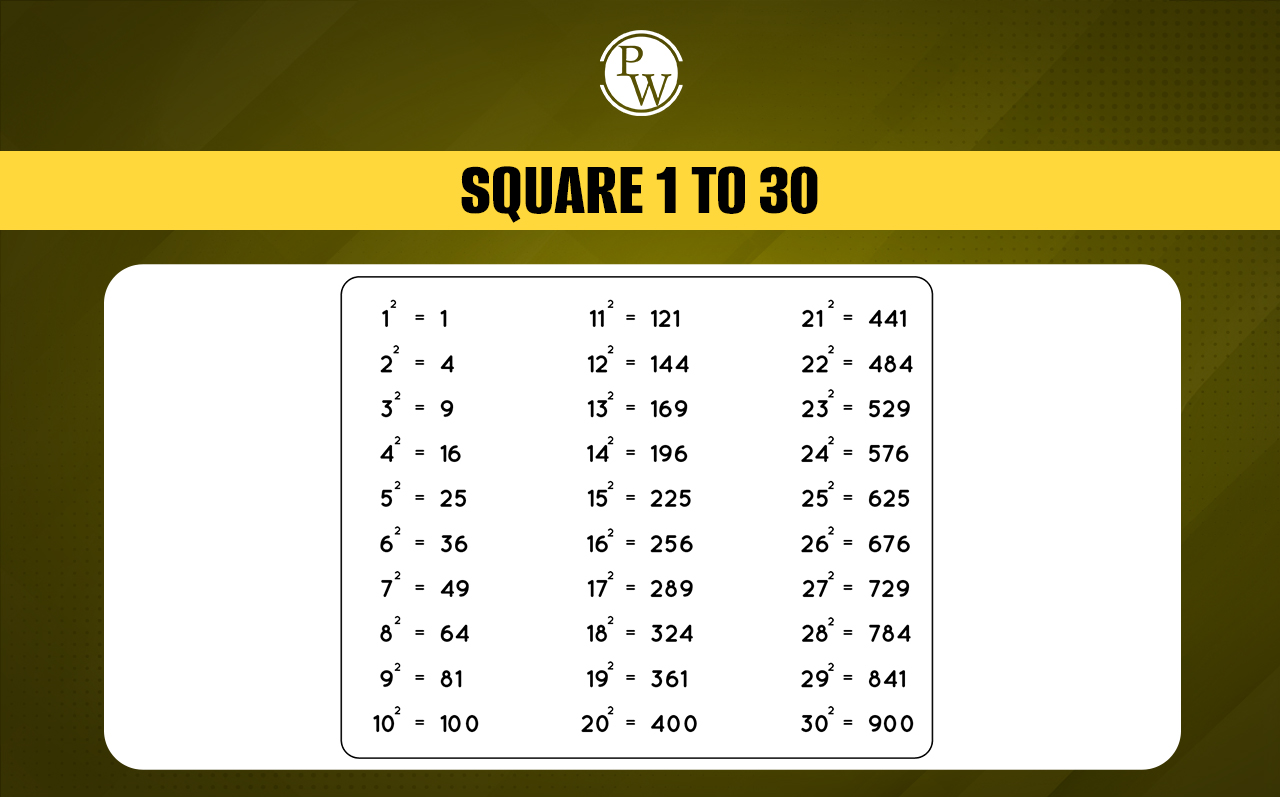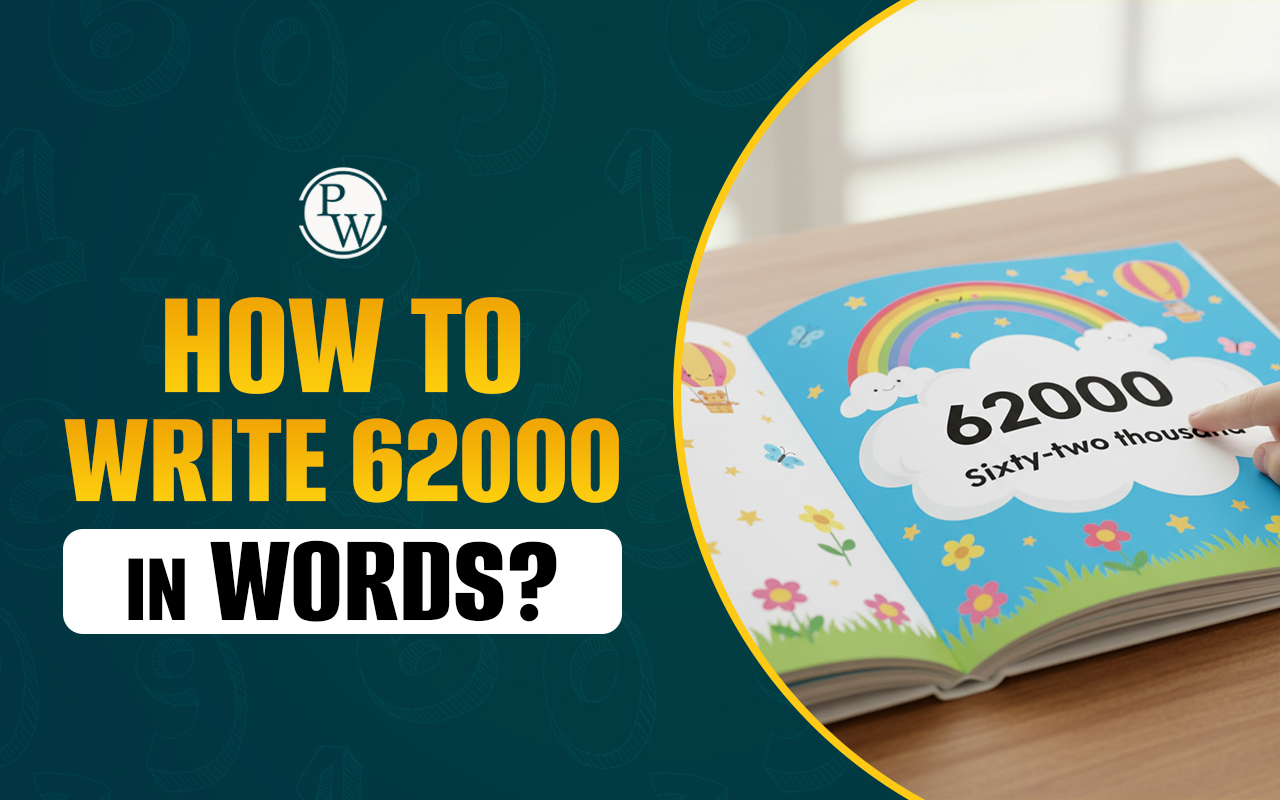
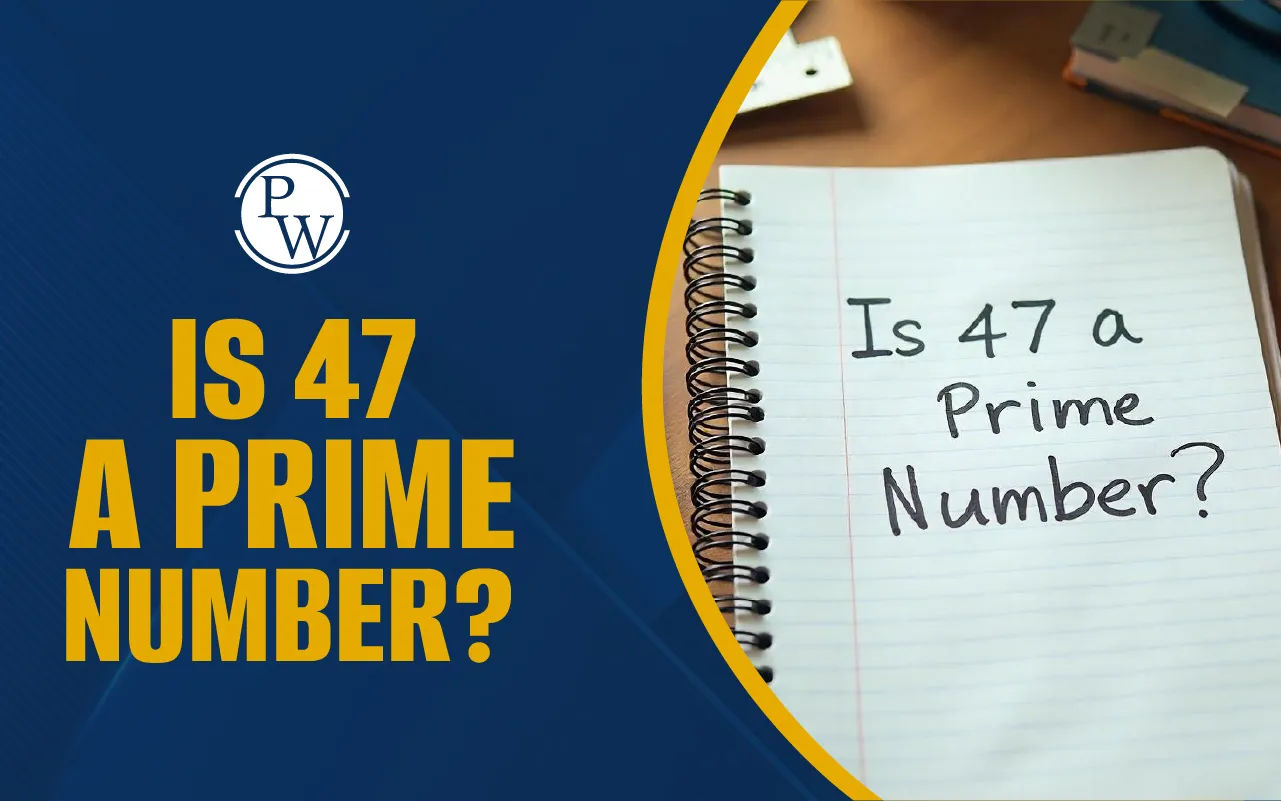
Is 47 a prime number? How do you know? While dividing 47 chocolates among friends, you will notice they can’t be divided equally unless shared individually. Or you keep all 47 chocolates to yourself.
A prime number is a number greater than 1 that can only be divided by 1 and itself. This concept forms the basis for many mathematical calculations in various fields, even beyond mathematics. With 47 as an example, this article lets you explore more about prime and composite numbers.
What is a Prime Number?
A prime number is a whole number divisible only by 1 and itself. If we divide a prime number by any other number, there will always be a remainder. In other words, a prime number has only two factors: 1 and the number itself.
For example, 13 is a prime number because it is only divisible by 1 and 13.
Read More - Numbers: Definition, Types, and Properties
What is a Composite Number?
A composite number is a number that has more than two factors. We know that every number is divisible by 1 and the number itself. So, a composite number includes factors as 1 and the number itself, along with at least another number.
For example, 68 is a number that can be factorized as follows:
68 = 2 x 2 x 17
So, 68 is a composite number because it has two factors, 2 and 17, apart from 1 and 68.
Read More - Number Names 1 to 100
Differences between Prime Numbers and Composite Numbers
The differences between prime and composite numbers are explained in the table below.
|
Differences between Prime Numbers and Composite Numbers |
|
|
Prime Number |
Composite Number |
|
It has only two factors |
It has more than two factors |
|
It can’t be divided by any number other than 1 and itself |
It can be divided by numbers other than 1 and itself |
|
The smallest prime number is 2 |
The smallest prime number is 4 |
|
It can be expressed as the product of only 1 and the number itself |
It can be expressed as a product of numbers other than 1 and the number itself |
Is 47 a Prime Number or a Composite Number?
To determine whether 47 is a prime number or not, we must check whether 47 is divisible by any number other than 1 and 47. 47 is divisible only by 1 and 47, and there are no other factors of 47.
So, we can say, 47 = 1 x 47
It is a prime number since 47 has no factors other than 1 and 47.
The number 47 has only two factors, 1 and 47. We can’t factorize it in any other way. Since factors of 47 are 1 and 47 only, we can say that 47 is not a composite number.
Read More - Tables From 1 to 12
What Are the Factors of 47?
Since 47 is a prime number, it has only two factors: 1 and 47. In other words, 47 can’t be evenly divided by numbers other than 1 and 47 without leaving a remainder.
We can check if there are any other factors of 47.
47 is not divisible by 2 because it is an odd number.
47 is not divisible by 3 because the sum of its digits (4 + 7 =11) is not divisible by 3.
47 is not divisible by 5 because it doesn’t end with 0 or 5.
47 is also not divisible by other prime numbers like 7,11, 13, 17, 19, 23, 29, 31, 37, 41, and 43. Therefore, the factors for 47 are only 1 and 47.
Prime Number Formula to Check if 47 is a Prime Number
There is a formula to find the prime numbers greater than 40. It is expressed as follows:
n2 + n + 41, where n are natural numbers 0, 1, 2, 3,…39.
This formula can be used to verify if 47 is a prime number.
For example,
(0)2 + 0 + 0 = 41
(1)2 + 1 + 41 = 43
(2)2 + 2 + 41 = 47
(3)2 + 3 + 41 = 53
and so on.
According to this formula, 47 is a prime number.
Read More - Multiplication: Definition, Formula, Examples, Rules, Table
Important Points
Here are some important points to be noted:
-
Prime numbers are always odd; only 2 is an even prime number.
-
If the sum of the digits of a number is divisible by 3, it is not a prime number.
-
Multiples of any number other than 1 are not prime numbers.
-
If the prime factorization of a number gives more than two prime numbers, then it is a composite number, not a prime number.
This article explains whether 47 is prime or composite and how understanding numbers builds stronger problem-solving skills. If you're looking for a fun and effective way to support your child’s maths learning, CuriousJr kids online classes make complex topics simple and engaging. Book a demo today and help your child build a strong foundation in maths through interactive learning.
Do you need help with your homework or preparing for exams?
Study without using the internet
Is 47 a Prime Number FAQs
Why is 4 the smallest composite number?
How many prime numbers are there between 40 and 50?
Are composite numbers odd or even?
How can 47 be expressed as the sum of three different prime numbers?

